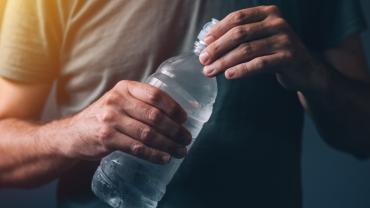
Maintaining optimal total body water content is crucial for overall health and athletic performance. The goal is to achieve and sustain euhydration, a state of optimal total body water content. In this state, the body operates most efficiently, positively impacting cardiovascular health, thermoregulation, athletic performance, metabolism, mood, and exercise recovery.
Body Water Regulation
The human body works tirelessly to maintain total body water content within a narrow window to uphold homeostasis. Disturbances in whole-body water volume and concentration trigger regulatory responses by the brain, including behavioral responses, thirst, hormonal release (such as vasopressin, angiotensin II, and atrial natriuretic peptide), and kidney excretion or retention of water and electrolytes. Daily water and electrolyte losses occur from various activities, including respiration, urination, bowel movements, and vomiting.
Dehydration and Sweat
Sweat, especially during physical exercise and exposure to warm/hot environments, is the largest source of electrolyte and water loss, potentially leading to dehydration or hypohydration – the opposite of euhydration. All water compartments (intracellular, interstitial, and intravascular) can dehydrate with sweating. Hydration after sweating depends not only on water content replenishment but also on maintaining electrolyte balance.
Effects of Hydration Levels
A body mass loss of over 2% due to water deficit can disrupt athletic performance, mood, attention, executive functioning, and motor coordination. Even a 1% body mass loss can impact cognitive function, such as impaired task performance, reaction time, short-term memory, and mood state. Rapid information processing that is necessary for many sports-related activities and general life, such as driving, may be impaired by minor hypohydration. Extreme hypohydration (greater than 5%) can compromise health and vital organ function.
Electrolytes and Euhydration
Key electrolytes essential for proper fluid balance and cellular function include sodium, potassium, chloride, calcium, phosphorus, and magnesium. Maintaining proper sodium status, in particular, helps to stimulate thirst and water retention. Exercise-induced hyponatremia, characterized by low blood sodium concentration, can result in various symptoms such as headaches, confusion, nausea, and delirium.
Fluid Balance and Individualized Plans
The overarching guidance to maintain euhydration is to replenish all fluids and electrolytes lost due to sweating. Fluid-balance needs depend on multiple factors and must be individualized for optimal results. Individual hydration plans should incorporate “rehydration strategies that consider sweat rate, environment, acclimatization state, body size, exercise duration, exercise intensity, and individual fluid preferences and tolerance.”
Euhydration Before, During, and After Exercise
Before any exercise, it's vital to start euhydrated. Ensuring euhydration involves listening to cues such as thirst, body weight, urine color, and drinking frequency. During exercise, the goal is to prevent more than a 2% body mass loss by consuming enough fluids to match personal sweat volume loss. This should be adjusted based on fluid availability, gastrointestinal upset, discomfort, environmental conditions, or fluid type. "Drinking to thirst" may help offset dehydration or overdrinking for those unaware of their sweat rate. The sensation of thirst typically increases at about 2% hypohydration and decreases when restored. (It is important to note that exercise may delay thirst sensations.) Post-exercise, replacing fluids and electrolytes within two hours is crucial for promoting euhydration, athletic performance recovery, and decreasing post-exercise fatigue. Consuming up to 150% of estimated fluid losses within a short recovery period is recommended.
Conclusion
Understanding and implementing advanced hydration strategies contributes to overall health for the general population and optimal performance and recovery for physically active individuals. Key elements include listening to bodily cues, individualizing hydration plans, and incorporating electrolyte-rich fluids to promote and maintain euhydration.
By Danielle Moyer Male, MS, CNS, LDN